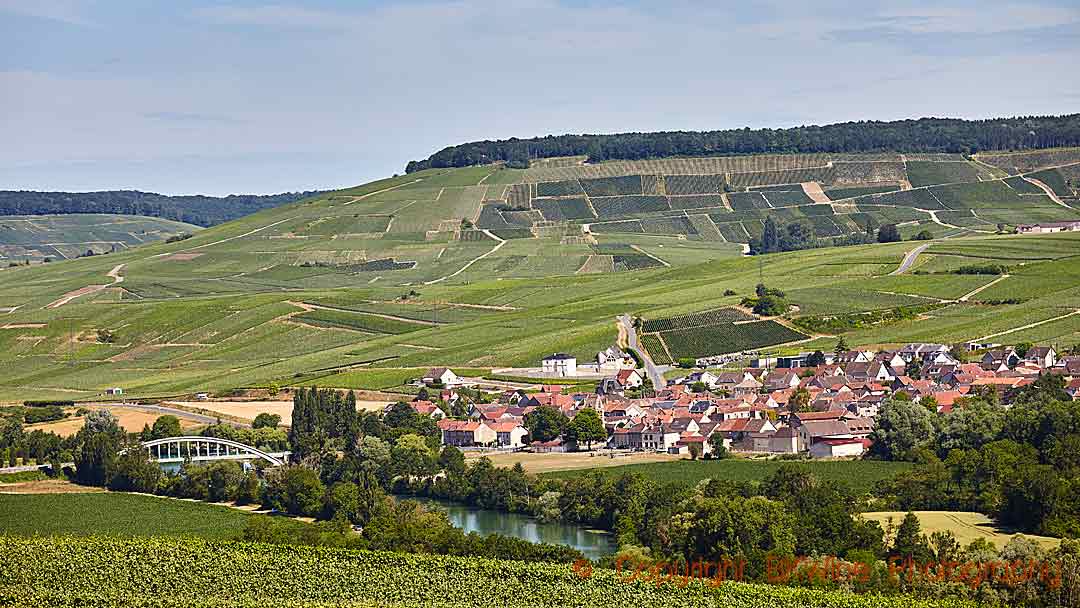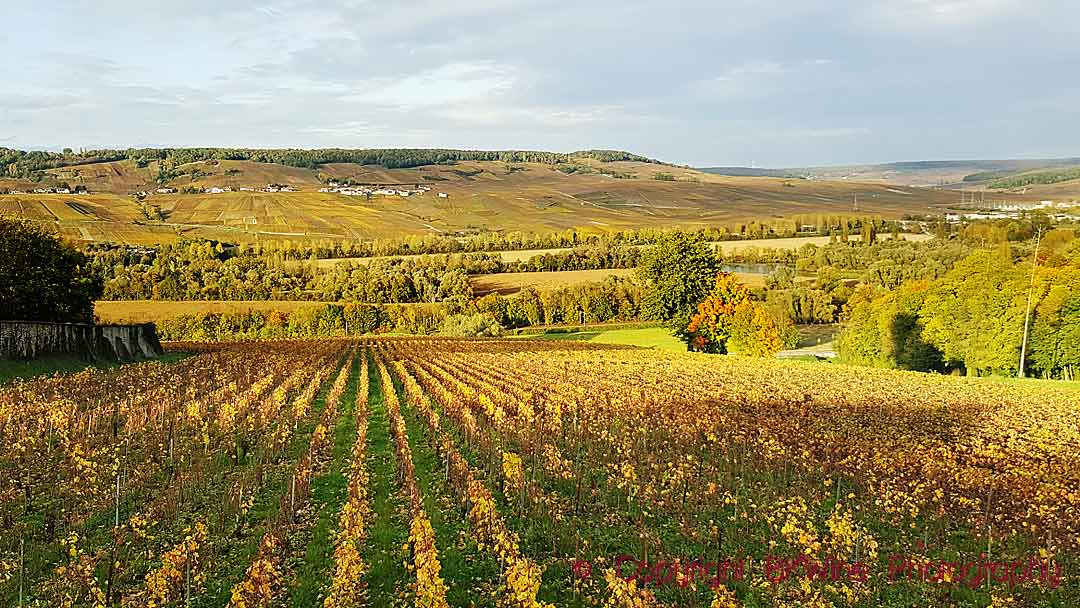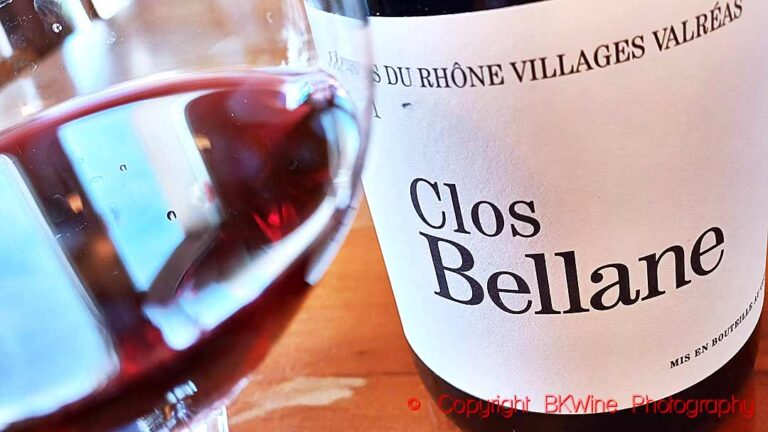Champagne has houses, independent growers, and cooperatives, some very big and some much smaller. One of the smaller co-operatives is one that I find quite interesting, Champagne Beaumont des Crayères. The main grape here is pinot meunier (but they call it only meunier). In most other places in Champagne, meunier has the back seat. Here it is in the front.
Champagne Beaumont des Crayères is a small cooperative in Champagne with 240 members and around 80 hectares of vineyards comprising many small plots. The cooperative’s winery is in Mardeuil, a village a kilometre west of Epernay in the Marne Valley, and the members’ vineyards are mainly around Mardeuil.
It all started in 1955 when some small wine growers decided to join forces and create a joint brand. They named their house Beaumont des Crayères after the name of two vineyards: Beaumont and Crayères.
This is a longer version of an article published on Forbes.com.
The initiative proved successful. They invested in exports, and today, 75% of production is exported. Sweden is the largest export market, ahead of the rest of Europe, Japan, the USA, and others. The house produces a maximum of 700,000 bottles a year. No grapes are bought from outside; only the members’ own grapes are used.
I recently tasted some of the house’s champagnes with Gauthier Quatrevaux, who has been chef du cave – chief winemaker – at Beaumont des Crayères for the past three years. He knows the house well because he was a consultant to their members before that. Gauthier and his colleagues’ job is not just to receive the grapes and make good champagne. Helping and advising the members throughout the year is a big part of the job. Many members have tiny holdings, which can be as little as a tenth of a hectare, and often have other jobs than just tending the small vineyard.
The advice includes working in the vineyard, how best to care for the vines, dealing with diseases when to harvest, and working towards the sustainability certification HVE (Haute Valeur Environnementale). “Many are already certified,” says Gauthier, “but it is complicated to get everyone on board.”
Beaumont des Crayères is known as a meunier specialist (the name is pinot meunier but is often just called meunier today; it is actually a clone of pinot noir). 65% of their vineyards is planted with meunier. They make some exquisite 100% meunier champagnes. Meunier has long stood in the shadow of pinot noir and chardonnay but has recently raised its status considerably. “It is an excellent variety, and it ages well,” says Gauthier.
I found a pleasant, rich taste of honey in the champagnes we tasted. Gauthier says it may come from the malolactic fermentation. “We always do malo on all our champagnes.” He and his team are discussing whether this needs to be changed in view of climate change, but it is not entirely obvious to decide, he says. “The malolactic gives a style, something that people recognise.”
Malolactic fermentation turns the malic acid in the wine into lactic acid. The wine feels softer, and the texture is creamy and buttery. In Champagne, some winemakers are very much against allowing the malolactic transformation to take place and stop it, often with an addition of sulphur.
Gauthier believes in the complexity that comes with ageing on the lees. The non-vintage champagnes stay 2-4 years in the cellar before disgorging, the vintage champagnes five years, and the prestige cuvées ten years.
But many other details come into the picture, he says. Thus, he makes all vintage champagnes and prestige cuvées from the cœur de cuvée (heart of the cuvée). La cuvée is the first 2050 litres that flow from the press and is considered the best. (You are allowed to press an additional 500 litres, so 2550 litres in total, out of 4000 kilos, the standard size of a press). So, the heart is the best of the best.
Tasting the champagnes of Beaumont des Crayères
The prices are from Champagne Beaumont des Crayères’ web shop.
Champagne Beaumont des Crayères Grande Reserve
A pleasant buttery and caramel flavour and fresh citrus aromas. It has excellent balance and a nice mouthfeel. The wine blends 60% meunier, 25% chardonnay, and 15% pinot noir. The base wine is 2020, with 30% reserve wine, most of which is 2018. The champagne ages on the lees for three years before disgorging. It has 8 grams of sugar. (31.50 euro)
Champagne Beaumont des Crayères Grand Meunier Extra Brut
Delicious notes of honey, but still with a lovely freshness. A creamy mouthfeel and a note of red berries. This is a brut de noir made entirely of meunier. The base wine is 2019 with 20% reserve wine. It is an extra brut with 4 grams of sugar. It ages on the lees for three years before disgorging. (35.50 euro)
Champagne Beaumont des Crayères Fleur de Meunier blanc de noir 2015
An elegant and excellent champagne with a lovely mouthfeel and some honey notes in the finish. 2015 was a hot year; you also feel the ripe fruit aromas and some spiciness. It is a brut nature; there was no reason to add sugar this year. Disgorged in 2023, so eight years on its lees. “We had great grapes that year, very healthy and properly ripe,” says Gauthier. “This champagne should be drunk with food,” he advises. (51 euro)
Champagne Beaumont des Crayères Grande Rosé Brut
Beautifully salmon-coloured, with citrus fruit, red berries, and hints of flowers on the nose. Elegant and light on the palate. About a third each of meunier, chardonnay, and pinot noir. The base wine is 2021. The colour comes from 10% of red wine from meunier. (36 euro)
Travel
The best way to discover the true soul of champagne is in Champagne. Explore pinot meunier, chardonnay and pinot noir on a wine tour to Champagne with BKWine.
Travel to the world’s wine regions with the wine experts and the wine travel specialist.
Wine tours that give you insight. BKWine wine tours.















